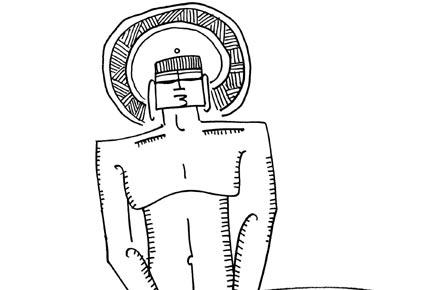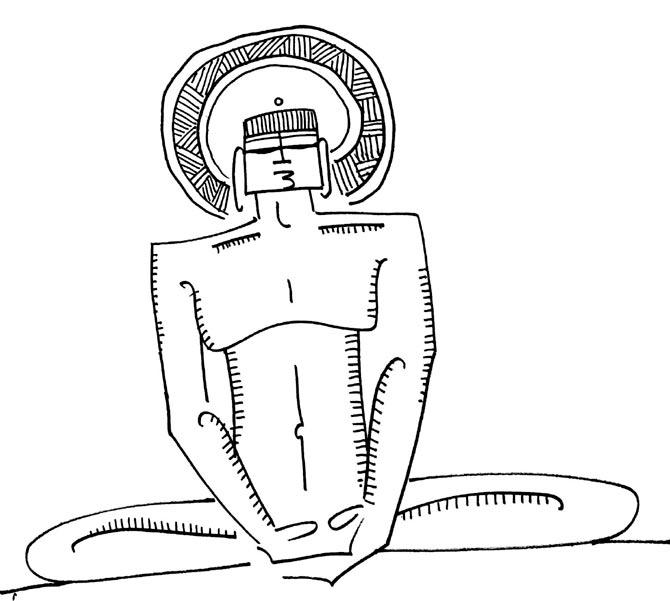Samadhi commonly refers to the tomb of a holy man, or a place where his relics are stored, or a place where he was cremated, example Gandhi samadhi. Traditionally, while most Hindus were cremated, a saint's dead body is buried, and the burial site becomes a holy shrine.

 Samadhi commonly refers to the tomb of a holy man, or a place where his relics are stored, or a place where he was cremated, example Gandhi samadhi. Traditionally, while most Hindus were cremated, a saint's dead body is buried, and the burial site becomes a holy shrine.
Samadhi commonly refers to the tomb of a holy man, or a place where his relics are stored, or a place where he was cremated, example Gandhi samadhi. Traditionally, while most Hindus were cremated, a saint's dead body is buried, and the burial site becomes a holy shrine.
Many Hindus believe that a holy man does not die, but is able to voluntarily liberate, through yogic practices, his life-force (jiva-atma) from the mortal flesh (deha) so that it unites with the cosmic infinite life-force (param-atma).
ADVERTISEMENT
So at a very young age, in the 13th century, we are told that the saint Dyaneshwara who wrote the first regional work on the Gita, took samadhi. The historian DD Kosami referred to this as ritual suicide annoying many devotees who refuse to see samadhi as suicide.
The idea of voluntarily killing oneself, or setting free one's jiva-atma through starvation (sallekhana, in Jainism) or by drowning (jal-samadhi, observed by Ram in Ramayana) or by burning oneself (the infamous and now illegal practice of sati) is part of Indian lore, long before suicide came to be seen as 'sin against God' after the entrenchment of Christian mythology in modern thought.
Illustration/Devdutt Pattanaik
But in the text Yoga Sutra, the word Samadhi is used at the final step of the 8 part yoga process (ashta-anga-yoga). And when gurus speak of it, they tend to be vague about what exactly it is.
A clue to what it is lies in the logic progression seen from step 1 of the yoga-sutra, which deals with relationships, to steps 3, 4, 5 and 6 which involves increased withdrawal using discipline, body, breath and sensory control, to steps 6 and 7 which deal with mental exercises such as awareness and attention.
What would be the logical 8th step? Going further, deeper into the mind, and beyond to realise what? The result we are told is kaivalya, or complete knowledge, of the whole universe. Patanjali equates it with a god-like state where we attain siddhi, with the power to walk on water and fly through the sky. Buddhism equates it with nothingness, or shunya. Hindus associate it with infinity, or ananta.
But could it something simpler. The word Samadhi is a fusion of two words: sama, and adhi. Sama is the first beat of a musical cycle in Indian classical music, the return to the first note. Adhi is means primal, or first. Thus it is return to the origin. What is our origin? What is the tree whose seed gave birth to our existence? Here, the answer may be two fold.
In Vedanta, the tree is divinity, God, described variously as consciousness or super-consciousness, something that is non-material and hence outside the rules of space and time. In Tantra, the tree is the Goddess, nature itself. We discover our origins in nature, in matter. The former gave rise to monastic traditions, which involves withdrawal of the senses.
The latter gave rise to sensual practices, often called occult, which basically involves amplification of the senses. They are two branches of the Vedic tree.
Another way of looking at Samadhi is to realise that's the path that enables the monk, who renounces the world, to return to the material world, at peace with the idea of death and suffering. Some call it immortality. Some call it freedom from the fear of mortality. His entry into the tomb is actually a return (sama) to the source (adhi): the womb.
The author writes and lectures on relevance of mythology in modern times, and can be reached at devdutt@devdutt.com
The views expressed in this column are the individual's and don't represent those of the paper.
 Subscribe today by clicking the link and stay updated with the latest news!" Click here!
Subscribe today by clicking the link and stay updated with the latest news!" Click here!







